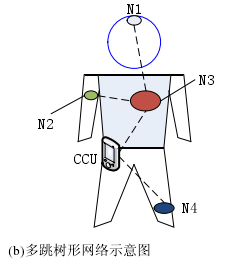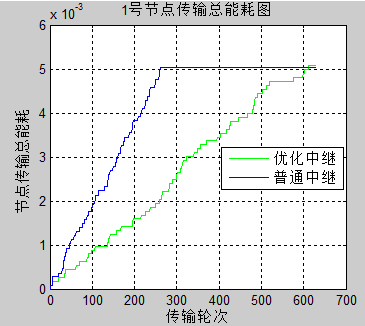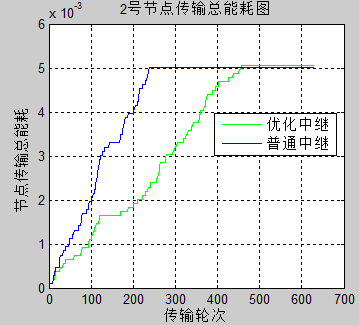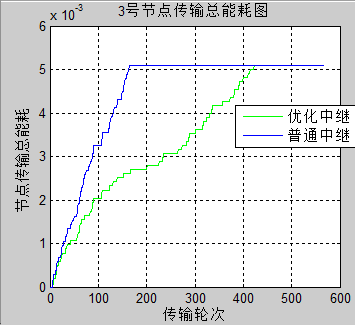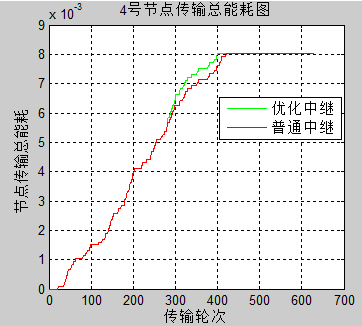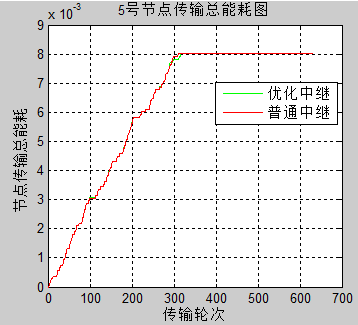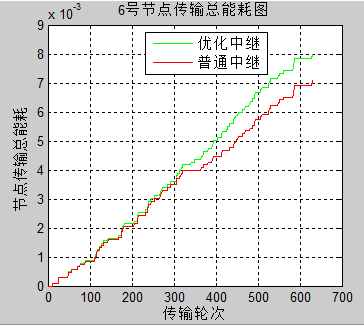基于IEEE 802.15.4的无线体域网MAC层协议设计及仿真毕业论文
2020-04-12 08:46:57
摘 要
随着人们生活水平的提高,无线体域网被广泛的关注。无线体域网是以人体表面的生物传感器或植入人体的生物传感单元为网络节点的一种特殊的无线传感网络。该网络的应用领域很广泛,特别是在医疗领域大量地被使用。但是一方面无线体域网的传感器节点普遍使用电池供电,电池的供电能力有限,另一方面对于植入人体内的生物传感器,更换电池变得更加困难。解决无线体域网的能耗问题成为近年来各研究机构的研究热点。在无线体域网中,节点能量大部分都被用在收发数据上面了,而MAC层协议可以调度节点对信道的使用,减少信息碰撞所消耗的能量。所以本文通过MATLAB软件对无线体域网的MAC层协议作了设计与仿真,目的在于:针对某一特定应用环境,对MAC层协议进行设计,使协议更加适合在该环境中使用。
本文首先介绍了研究的背景和无线体域网的研究现状,然后概括了无线体域网的应用领域和结构特点。通过对IEEE 802.15.4标准中的一些无线技术的介绍,给出了无线体域网MAC层协议可能用到的方法。然后介绍一种基于路径损耗的中继选择MAC层协议,但是由于这样的协议对于中继节点的能量损耗过大,不能对网络中一些能量小的特殊节点提供保护。所以本文针对医疗监护中的无线体域网,对原有的MAC层协议进行改进,使其在中继选择时对节点有所区分,同时基于节点类型和节点剩余能量。最后通过软件仿真,对比发现改进之后的协议对于特殊节点的保护要优于原协议,并且在很长的一段使用时期内提高了网络功能的完整性,网络的丢包率也得到了一定的改善。
总之,本文基于IEEE802.15.4标准中的无线技术,针对无线体域网的一个具体应用环境,对MAC层协议进行了改进与仿真。改进之后的协议使特殊传感器节点的网络寿命得到大幅度的提升,对普通节点的牺牲也只是轻微地降低了它们的寿命。本文所设计的协议,对该环境中无线体域网的节能研究有一定的启发作用。
关键词:无线体域网 MAC层协议 能耗优化 IEEE802.15.4
Abstract
With the improvement of people's living standards, wireless body area network has been widely concerned. The wireless body area network is a kind of special wireless sensor network which is a biosensor on the human body surface or a biosensor unit implanted in the human body as a network node. The network has a wide range of applications, particularly in the medical field. However, on the one hand, the sensor nodes of the wireless body area network generally use battery power, and the power supply capacity of the battery is limited. On the other hand, it is more difficult to replace the battery for implanting the biosensor in the human body. Solving the energy consumption problem of the wireless body area network has become a research hotspot in various research institutions in recent years. In the wireless body area network, most of the node energy is used to send and receive data, and the MAC layer protocol can schedule the node to use the channel to reduce the energy consumed by information collision. Therefore, this paper designs and simulates the MAC layer protocol of wireless body area network through MATLAB software. The purpose is to design the MAC layer protocol for a specific application environment so that the protocol is more suitable for use in this environment.
This article first introduces the background of the research and the status quo of the wireless body area network, and then summarizes the application areas and structural characteristics of the wireless body area network. Through the introduction of some wireless technologies in the IEEE 802.15.4 standard, a possible method for the MAC layer protocol of the wireless body area network is given. Then a relay selection MAC layer protocol based on path loss is introduced. However, because this protocol has too large power loss for the relay node, it cannot provide protection for some special nodes with small energy in the network. Therefore, in this article, aiming at the wireless body area network in medical monitoring, the original MAC layer protocol is improved so that it distinguishes the nodes during the relay selection, and at the same time, based on the node type and the remaining energy of the nodes. Finally, through software simulation, it is found that the improved protocol is superior to the original protocol for protection of special nodes, and improves the integrity of the network function during a long period of use. The network packet loss rate has also been improved.
In a word, this text is based on the wireless technology in IEEE802.15.4 standard, aiming at a concrete application environment of the wireless body area network, have improved and simulated to MAC layer agreement. After the improved protocol, the network lifetime of special sensor nodes is greatly improved, and the sacrifice to ordinary nodes only slightly reduces their lifetime. The protocol designed in this paper has a certain enlightening effect on the energy-saving research of wireless body area network in this environment.
Keywords: WBANs MAC protocol Energy optimization IEEE802.15.4
目录
摘要 I
Abstract II
第1章 绪论 1
1.1研究的背景及意义 1
1.2国内外研究现状的介绍 1
1.3研究的目的 2
第2章 无线体域网的基本理论 3
2.1无线体域网的应用 3
2.2无线体域网的结构构成 4
2.2.1无线体域网的网络结构 4
2.2.2无线体域网的拓扑结构 5
2.3无线体域网的特点 7
2.3.1无线体域网与无线个域网、无线传感器网络的共同特点 7
2.3.2无线体域网独有的特点 7
第3章 IEEE 802.15.4标准的MAC层概述 9
3.1 MAC层设备 9
3.2 MAC层地址 9
3.3 MAC层帧 9
3.4 信道接入 9
3.4.1超帧 10
3.4.2 CSMA-CA信道接入算法 11
3.5数据传输过程 11
3.5.1设备给协调器发送数据 11
3.5.2协调器给设备发送数据 12
3.5.3对等设备间的数据传输 13
第4章 MAC层协议设计与仿真 14
4.1设计的应用环境 14
4.2基于特殊节点的中继优化MAC层协议 14
4.2.1基于路径损耗的中继选择MAC层协议 14
4.2.2 基于特殊节点对原协议的改进 16
4.3 MAC层协议的仿真 17
4.4 仿真结果与分析 19
第5章 结论 25
5.1总结 25
5.2展望 25
参考文献 26
致谢 28
第1章 绪论
1.1研究的背景及意义
近年来,随着通信技术和传感器网络的不断发展,无线网络的标准和技术受到了各界的广泛关注。无线通信早已应用到生活的各个方面,但随着我们身边无线设备的增加,迫切需要以个人为中心的网络 。IEEE 802.15.4 标准和无线个域网(Wireless Personal Area Networks,WPANs)随着时代潮流而迅速发展。
。IEEE 802.15.4 标准和无线个域网(Wireless Personal Area Networks,WPANs)随着时代潮流而迅速发展。
有学者认为,无线体域网(Wireless Body Area Networks,WBANs)是WPANs的一种,同时它也是以人体表面的生物传感器或植入人体内的生物传感单元为网络节点的一种特殊的无线传感网络(Wireless Sensor Network,WSN ) 。这些生物传感单元能够监测人体的生理指标或特殊的动作,并对这些信息做一些处理,将它们传输到附近的基站。无线体域网在医疗健康领域中有很大作用,如对一些病情严重的病人进行实时监护
。这些生物传感单元能够监测人体的生理指标或特殊的动作,并对这些信息做一些处理,将它们传输到附近的基站。无线体域网在医疗健康领域中有很大作用,如对一些病情严重的病人进行实时监护 。但是,体域网中节点普遍采用电池作为能量供给,这在很大程度上制约了传感器节点的体型和发射功率。并且对于植入人体内的生物传感器,更换电池会对人体造成麻烦,为减小对人体的伤害,必须在能量有限的条件下完成完成更多的数据传输
。但是,体域网中节点普遍采用电池作为能量供给,这在很大程度上制约了传感器节点的体型和发射功率。并且对于植入人体内的生物传感器,更换电池会对人体造成麻烦,为减小对人体的伤害,必须在能量有限的条件下完成完成更多的数据传输 。所以,对于无线体域网而言,如何高效利用电池能量,延长网络的工作寿命尤其重要。
。所以,对于无线体域网而言,如何高效利用电池能量,延长网络的工作寿命尤其重要。
同时,这些生物传感器的主要能量都用于接收和发送数据,而媒体访问控制(Media Access Control,MAC)层的作用是控制传输节点合理高效地利用通信资源进行信息传输,调节信道的使用。所以一个高效的MAC协议可以很好地解决节点信息碰撞等浪费能量的现象,可以极大的节省节点能耗 。总之,MAC层协议的设计及优化具有很强的现实意义和研究价值。
。总之,MAC层协议的设计及优化具有很强的现实意义和研究价值。
以上是毕业论文大纲或资料介绍,该课题完整毕业论文、开题报告、任务书、程序设计、图纸设计等资料请添加微信获取,微信号:bysjorg。
相关图片展示:
